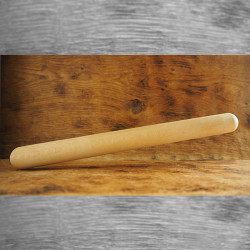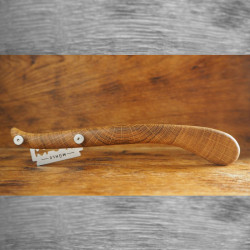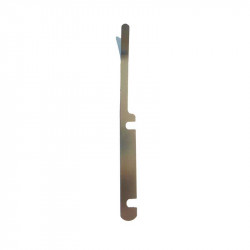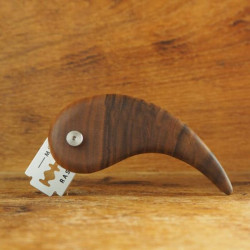A Mail deliveries
Order by 4 pm = delivery the next working day.
Free delivery
From CHF 100 purchase
-
MenuBack
-
Online Store
-
-
-
- Couverture
- Temperature control units
- Aids for chocolate
- Chocolate molds
- Praline fillings
- Chocolate ingredients
- Praline hollow body
- Chocolate colors
- Chocolate tattoos
- Chocolate packaging
- Bean to Bar
- Material for cutting chocolates
- Batons with Kirsch
- Airbrush for chocolate
- High Heels Accessories
- Textured films for chocolate
- Chocolate fountain & fondue
-
-
-
-
-
- Cakes Fillings & Ingredients
- Fondant & Marzipan
- Cakes tools
- Cake rings
- Silicone molds
- Decorative mats
- Baking pans for cakes
- Cake stand
- Cakes packaging
- Airbrush for cakes
- Sugar flowers accessories
- Cake Topper & Wedding Figurines
- Cakes dummies
-
-
-
-
-
-
-
-
-
-
-
-
-
-
-
-
-
-
-
-
-
-
-
- Baking chocolate
- Glucose & Sorbitol
- Cocoa beans
- Cocoa nibs
- Monin syrup
- Champagne & Alcohols
- Freeze dried fruits
- Cake & cake glaze
- Flours & baking ingredients
- Chocolate coating & chocolate
- Milk powder
- Granules
- Nuts & Nougat
- Fruit puree
- Creams & Fillings
- Egg yolk & egg white
- Fruit powder
- Special ingredients
- Fondant & Flower Paste
-
-
-
-
-
-
-
- Punching, cutting & embossing
- Mixing bowls & whisks
- Chocolate material
- Thermometer & Burner
- Gloves & Protective Material
- Smoothing & Modeling
- Roll out bar
- Dough scraper & horn
- (Flour) sieves
- Brushes & Tweezers
- Cake turntable
- Spatula & Spatula
- Silicone embossing molds
- Insert strips & cake slices
- Measuring cup
-
-
-
-
-
-
-
-
-
-
-
-
-
-
-
Schablonen & Stencils
-
-
-
-
-
-
-
-
-
-
-
Courses
-
-
- Current courses
- Praline courses
- Chocolate courses
- Chocolate kiss course
- Macaron courses
- Cake courses
- Baking courses
- Patisserie courses
- Ice cream course
- Guetzli, Cookie & Confectionery Courses
- Bread courses
- Pasta courses
- Apéro course
- Cooking courses
- Cupcakes courses
- Éclair course
- Courses in Zurich - Adliswil
- Children's courses
-
-
- Team Events
- Hen Night
- Retail Store
-
About Us
-
-
-
DirectionsDownload relevant PDF now.
-
-
-
Recipes blog
-
-
Recipes Blog
-
-
-
Shipping and Payment
-
List of products by brand Schnitt-Holz
At Schnittholz you will find beautiful equipment made of fine and handcrafted wood for baking. A wooden stick can be used to roll out dough thinly and elegant wooden baker's knives ensure the perfect appearance of your breads.
There are 13 products.
Active filters
They come in all colours and grains, the handle fits comfortably in the hand and the razor blade can be used to cut the dough perfectly. The baker's knives from Schnitt-Holz are all handmade with love. Each piece of wood is carefully selected, shaped with a plane, ground, polished, oiled and finally waxed. A narrow gap is sawn into the top of the knife and two small screws are inserted. These can then be used to attach a razor blade, and how firmly it sticks out can be easily adjusted.
The special thing about these knives is that each handle is handmade and unique. Since wood is a natural product, no two pieces look exactly like each other. So even the pattern of the knife, which is due to the wood grain, will always be slightly different. Why don't you come directly to our shop, so you can look at the individual baker's knives and choose the grain that suits you. Or let yourself be surprised by ordering a baker's knife from your favourite wood in our online shop!
Due to the careful processing, the wooden handles are pleasant to hold, the wood provides a great look and a pleasant atmosphere. Wood is a wonderfully reliable material that conveys a warm and cosy feeling. This is also one of the reasons why Jochen Hauer, the founder of Schnitt-Holz, was so interested in it.
The manufacturer of the baker's knives, who still makes each piece by hand, originally started with a few items for his own kitchen. He loved the smell of wood and the way a piece of wood tells the story of an entire tree. So you can see nutrient-rich and nutrient-poor, wet and dry times, summer and winter in the annual rings. Since Jochen Hauer also liked to spend his time cooking and baking, he wanted to bring some wood into his kitchen.
With a lot of patience and dedication, he made his first bowls and chopping boards, followed by fine blade holders. Finally, he fiddled around with the baker's knives until they met his wishes and ideas. Since then, he has made countless baker's knife handles and brought so much joy into the kitchens of passionate bakers.
But why do you need such a baker's knife? The sharp blade allows precise cuts, the handle makes for easy handling. With just a few cuts, you can check how the bread rises, what pattern it gets and where it gets particularly crispy.
If you want to give a loaf a little more height, you cut into the side of the loaf. In contrast to cuts on top of the dough, side cuts ensure a more even rise at the edges.
Originally, cutting into the bread served another purpose. In the past, families did not have their own oven in the house. In the centre of larger villages there was a large communal oven. Depending on the size of the village and the number of people using it, the oven was heated once to four times a year. At that time, each family came to bake their bread. So that everyone could take their own bread home, everyone had their own cutting technique. After baking, it was easy to determine which family had made the dough by looking at the risen cuts.
Cutting in
But how should a loaf of bread be cut? In most cases, you will find instructions in the recipe, but the pattern can of course be varied. Here are some ideas:
Baguettes are traditionally cut deep and elongated. This results in an even shape and the desired, particularly crispy crust. To cut the baguette dough, insert the baguette blade into the baker's knife. Now the blade can be bent slightly and attached. The baguette blade insert makes the blade slightly curved and freer. This allows for deep, angled cuts. Hold the baker's knife relatively flat and cut the dough diagonally, deeply. This creates flaps of dough that continue to rest on the baguette but pull slightly outwards. The baguette is baked with a few of these cuts.
Particularly beautiful patterns are also created if the dough is floured before cutting into it. By tearing open the crust, the pattern remains free and is easy to see.
Roll the dough piece in a little flour and tap off any excess.
Clamp the baguette blade insert into the baker's knife and insert the blade so that it is only slightly curved. Then cut a small spiral from the edge, covering about a quarter of the bread. On the other side, make a long cut slightly curved across the bread. From this deep cut, make slightly less deep cuts diagonally to the right and left. Baking in this way creates a leaf.
Very simple are also cuts that you know from the bakery. A long cut on the side of the bread makes for a large and crispy crust, a cross cut in the top makes for a nice even spread when baking.
You can give these simple patterns a more special look with some sesame seeds, poppy seeds, semolina or linseeds. Instead of flour, the dough is rolled in seeds or semolina on one or both sides and then cut into the dough. In this way, you can create an incredible variety of bread decorations with just a few techniques!













